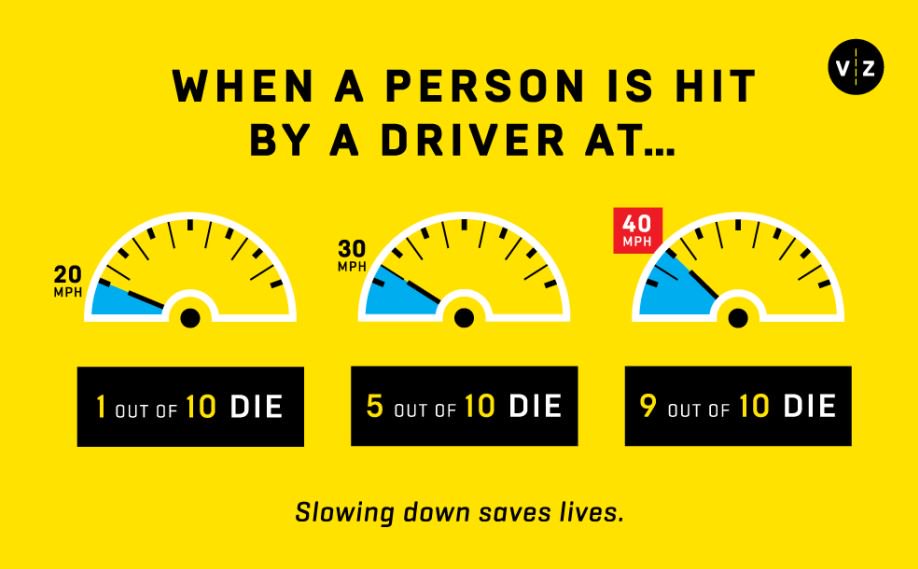By Yafa Dias

A visual from the city’s Vision Zero Action Plan
On Thursday, September 28th, after several months of deliberation, the City of Philadelphia released its Vision Zero Action Plan. The press conference for the three year plan was held at City Hall at 10am. In attendance were Mayor Jim Kenney, the Office of Transportation and Infrastructure Systems, Vision Zero Alliance members, PennDot, SEPTA, Police, and the Public Health Department of Philadelphia.
The three-year action plan relies on certain fundamental goals to eliminate traffic related deaths by the year 2030. Members of OTIS spoke about the importance of this work, and the engineering, education, and enforcement changes that will have to be made to make Philadelphia a safer city to travel.
Of note: The Philadelphia Health Commissioner noted that Vision Zero is, indeed a health issue — and not necessarily for the reason you think. Sure, he noted, fewer people dying in traffic is good for the overall health of the city, but more people walking and more people on bicycles is good for everyone.
“If more people walk and bike it will actually reduce the number of injuries,” said Thomas Farley, Head of Philadelphia’s Public Health. “Cities that have more people walking and bicycling on the street have fewer injuries because their safety in numbers.”
From 2012-2016, 432 deaths were the result of traffic and 1,200 severe injuries. One of the more important streets and highways Vision Zero emphasized on was Roosevelt Boulevard in which a special plan called “The Route for Change” has been developed.
The plan shows how they hope to have bus improvements, better pedestrian crossing, consistent and dependable travel times, integrated bicycle facilities and broader economic development.
The city also released a high-crash map, highlighting the 12 percent of city streets where 50 percent of all high-impact crashes are taking place.

“Mayor Kenney’s three year Vision Zero Action Plan lays out numerous commitments that will be carried out by multiple agencies,” Bicycle Coalition of Greater Philadelphia’s director Sarah Stuart said. “This Plan is exactly what the Bicycle Coalition asked for during the 2015 Mayoral election and which Mayor Kenney promised to do. We look forward to tracking the progress that the City makes on these commitments and working in partnership with the City to help engage communities make their streets safe for everyone.”
Many of the statistics about why we need to slow down traffic, create additional infrastructure, and make the city safer, are staggering.
For instance, about 100 people are killed in traffic in Philadelphia each year. And nearly 400 are either killed or severely injured. Every day, about four children are involved in a traffic crash. Philadelphia has a higher crash rate than New York City, Los Angeles, and Boston. And while people walking and on bicycles make up a relatively small percentage of the people involved in crashes, they (pedestrians especially) make up a disproportionate amount of people killed.
The Bicycle Coalition will have more analysis of the Vision Zero Action Plan, and how it will affect Philadelphians, in the days to come.

Noble goals, to be sure. But the phrase “slow down traffic” would, ideally, be replaced by one that reflects the actual statistical facts about speed and crash causes. It’s extremely unlikely that all drivers are actually running along at crash-causing velocities. Try something far more realistic, scientific, and even conciliatory. How about “putting a cap on maximum speeds” or “slowing the truly bad actors”?